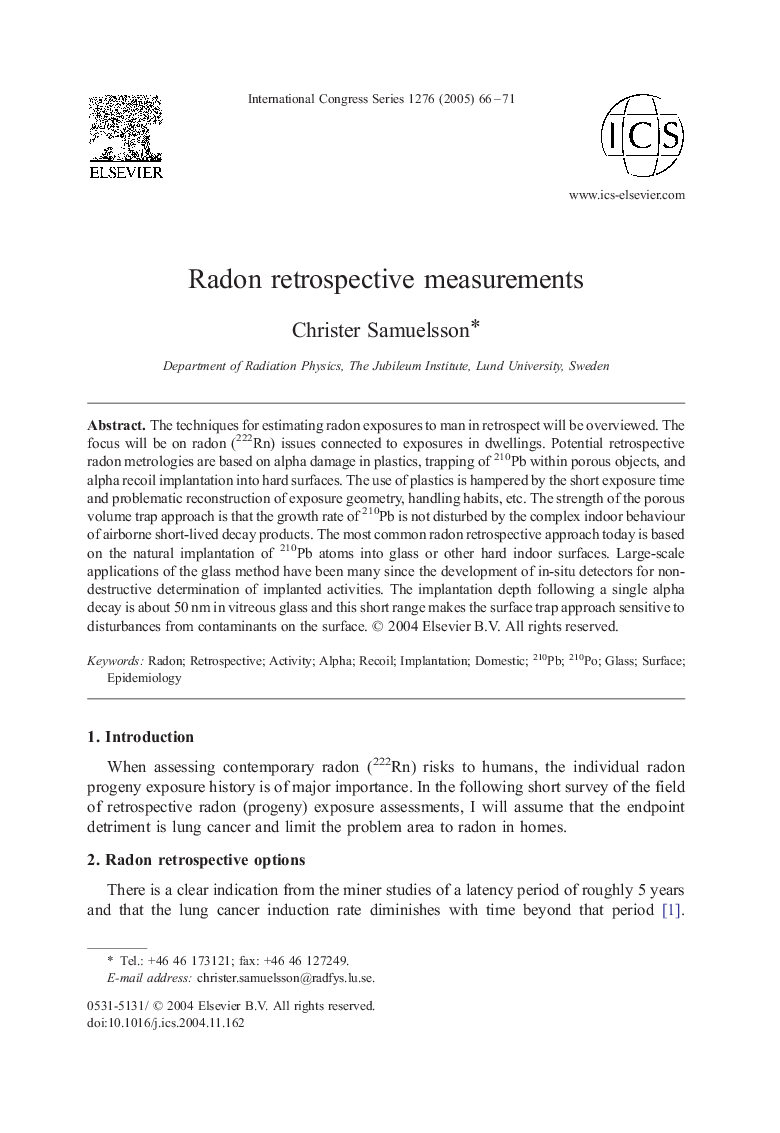| Article ID | Journal | Published Year | Pages | File Type |
|---|---|---|---|---|
| 9021557 | International Congress Series | 2005 | 6 Pages |
Abstract
The techniques for estimating radon exposures to man in retrospect will be overviewed. The focus will be on radon (222Rn) issues connected to exposures in dwellings. Potential retrospective radon metrologies are based on alpha damage in plastics, trapping of 210Pb within porous objects, and alpha recoil implantation into hard surfaces. The use of plastics is hampered by the short exposure time and problematic reconstruction of exposure geometry, handling habits, etc. The strength of the porous volume trap approach is that the growth rate of 210Pb is not disturbed by the complex indoor behaviour of airborne short-lived decay products. The most common radon retrospective approach today is based on the natural implantation of 210Pb atoms into glass or other hard indoor surfaces. Large-scale applications of the glass method have been many since the development of in-situ detectors for non-destructive determination of implanted activities. The implantation depth following a single alpha decay is about 50 nm in vitreous glass and this short range makes the surface trap approach sensitive to disturbances from contaminants on the surface.
Keywords
Related Topics
Life Sciences
Biochemistry, Genetics and Molecular Biology
Molecular Biology
Authors
Christer Samuelsson,
